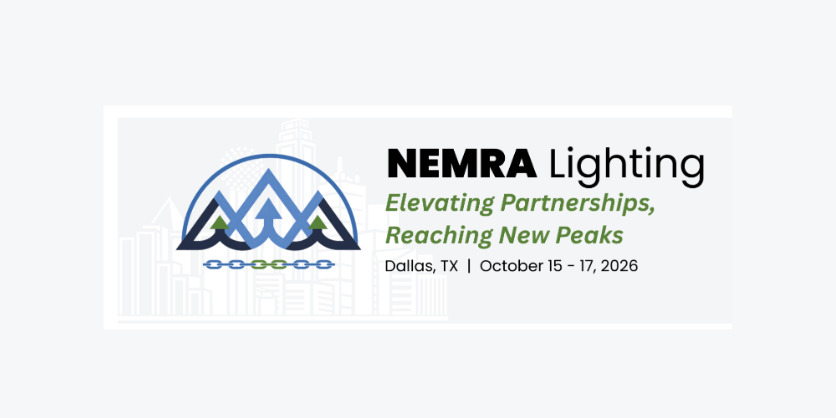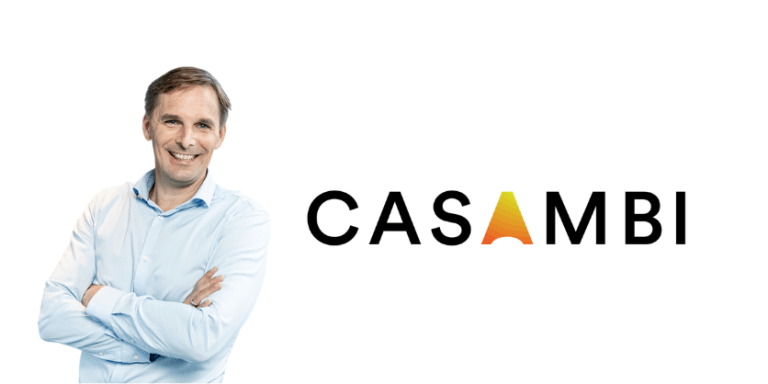NEMRA Lighting Division’s Summit to Offer Unique Experience

In an interview with US Lighting Trends, Jeffrey Bristol, Division Vice President-Lighting for the National Electrical Manufacturers Representatives Association (NEMRA) explains that the newly created NEMRA Lighting Summit – which will be held in Dallas in October – offers distinctly different benefits that sets it apart from the upcoming annual NEMRA26 Conference, which takes place in Orlando in February.
While both share a networking component, the new Summit experience is more intensive because it is unencumbered by the time constraints of a typical conference schedule. The NEMRA Lighting Summit, by its very design, is set up to foster deeper one-on-one communication between manufacturers and lighting agencies. “This is a true business planning [event],” Bristol says.
Meetings during the Summit are also longer than other networking gatherings in related industries. “There just never was enough time to get into more than one topic,” he recalls of the other industry events. For that reason, the minimum meeting time at the Summit is one hour, and each company has a private, modular suite for its meetings. “You could theoretically book 30+ meetings with all of your agents who are attending,” Bristol comments, adding, “It gives you the opportunity to meet with the principals of all of your agencies in one place.”
There is also inherent cost and time savings with the Summit. Plus, by holding the inaugural event in the fall, the timing is ideal for strategizing for the year ahead.
Bristol explains the advantage for manufacturers as a way to save both time and money. If a manufacturer wanted to visit 30 rep agencies across the country, at what could be $1,000 or $2,000 per trip, that endeavor would cost the manufacturer between $30,000 and $60,000 as well as time away from the office. “Instead, manufacturers can bring the president of the company, the head of sales, the head of product management, and maybe their head of marketing to the Summit meetings. Not only can manufacturers listen to agents’ feedback on new products as well as their needs and wants and plans to grow the business, but these meetings also give the manufacturers the opportunity to interject what they want to see from the agency in the new year and lay out a plan with them, whether that be enhanced commissions or territory expansion,” he comments.
Membership Growth Plans
Right now, NEMRA Lighting Division has approximately 100 members on the architectural/commercial side of the lighting business since it started up in January 2025. By Bristol’s estimate, there are roughly 785 agencies across the U.S. and Canada, and line cards can often average between 50 and 100 manufacturers. “As we look to grow, we are looking to align agencies and their manufacturers as members,” he states. “We’re trying to make sure at this early stage that the manufacturers and the agents that we bring on as members have good partnership alignments.” Reaching out to the residential side is more of a longer-term plan.
How did the lighting division come about? Bristol explains that NEMRA was looking to expand as an association and to do that in a way that made sense. A significant number of NEMRA members – 70% by his estimate – already had lighting lines to some degree. Since the NEMRA Conference was already drawing 2,500 attendees – “which is huge” – it made sense to form a division that would “cater to our lighting members and have a lighting-specific conference that could offer training tools, affiliations, and service providers that are dedicated to lighting. It just creates a much stronger value proposition,” he states.
Lighting-oriented education is also part of that plan. NEMRA’s Lighting Division recently developed an education curriculum in partnership with the Illuminating Engineering Society (IES). “As an association, we didn’t want to invent the wheel when it came to training. There is a ton of training material out there; it’s just not organized in a meaningful way,” Bristol says.
“If you look at the agent population in particular, one of the biggest needs/wants is training. Most are small businesses and therefore don’t have training departments and they don’t have the opportunity to send people to off-site training across the country and spend a considerable amount of money,” he explains. “Our goal was to say, ‘Let’s work with IES, who is the authority on training. Let’s compile an entire curriculum that covers every experience level within an agency or manufacturer as part of this program. That way, when you hire someone who doesn’t have lighting experience, they can be pointed to the first step in the curriculum and learn all of their lighting fundamentals from that place. And because it’s universal that the manufacturers are also doing that same basic training with their people, now you’ve got commonality and consistency in the material that everybody is reviewing. We took this path of saying, ‘If we create these steps so that the first one is creating the fundamentals of lighting, then the second step focuses in on that element of either an agent or a manufacturer – like a regional manager – who is calling on distribution, contractors, users, and ESCOs, and covering all the basics of lighting and control, application, problem-solving, quick quoting, and basic service selling; and the third step is lighting-specialized, which gets into the specification end of the business such as understanding the specification cycle, understanding the submittal process, understanding the roles that people play in that process – the designer, the specifier, the architect, the lighting agent – and how they interact together to take a project from cradle to grave. The fourth and final step is the lighting professional, which takes a consultative approach — and that’s geared toward the folks who are working with the high-end specification community where they’re focused on aesthetics as well as performance, or they’re diving into specialized layout, lighting layout, controls layout, and other things.”
NEMRA members access the training through the NEMRA portal, which takes them to the NEMRA page that now lives within the IES site. “The benefit there is two-fold; we can literally adapt the curriculum or modify the curriculum within minutes,” Bristol explains. “For example, we just did an entire presentation on the recent ArchLIGHT Summit about the evolution of lighting controls. The video that we did was so good that we took it, added a few things, and now it’s layered into our level two training because it was a perfect fit for that. Another good example came from people who said they liked what we did on emergency lighting, but felt that we didn’t go deep enough and they wanted to create a presentation for us with more information for our members. They gave us an entire emergency lighting module that goes into all of the codes and the application styles of emergency lighting so that our members can be better trained and educated in that particular application. Our members get the benefit of what IES has in their library, plus we create our own content that we can put up there because we know that this is an important initiative and not only do we want our agents to be able to access this, but we want the lighting community in general to understand and utilize this.”
While all of the training steps are free to members, to unlock the full benefits of the third and fourth step, NEMRA asks its members to join IES. “Once you get to those levels, it makes sense to be an IES member, plus it supports our alliance partnership,” Bristol comments.
What makes the NEMRA-Lighting Division training program unique is that there is nothing out there exactly like it. “It sounds simple, but nobody’s ever done it,” he says. “Nobody has done a curriculum like this and allowed it to be as fluid and alive as this is. The other neat thing is that we’re in the process of developing a NEMRA lighting control certified program that we will offer to our members. The training doesn’t stop with just this curriculum. We want to continually be offering opportunities for training and certification.”
According to Bristol, these alliances are mutually beneficial. “This is a win-win scenario. It’s good for everybody in the industry. Our goal is to strengthen our partnerships and relationships with associations to be able to offer members more than what we can alone. Along those same lines, we are offering IES members our expertise as how to improve different aspects of their business. We want to work together with alliance partners to offer our members the best of training, service providers, and conferences that we possibly can.”
To learn more about the NEMRA Lighting Summit, click here.
Related articles
NEMRA Lighting’s Stepped Educational Program a Hit With Industry Members of All Levels







